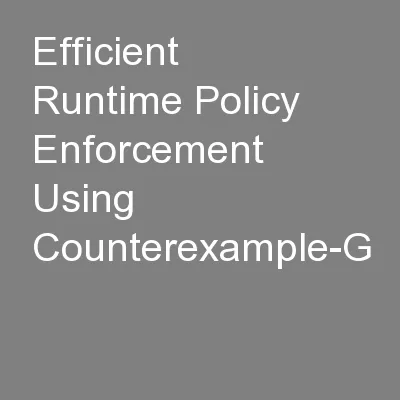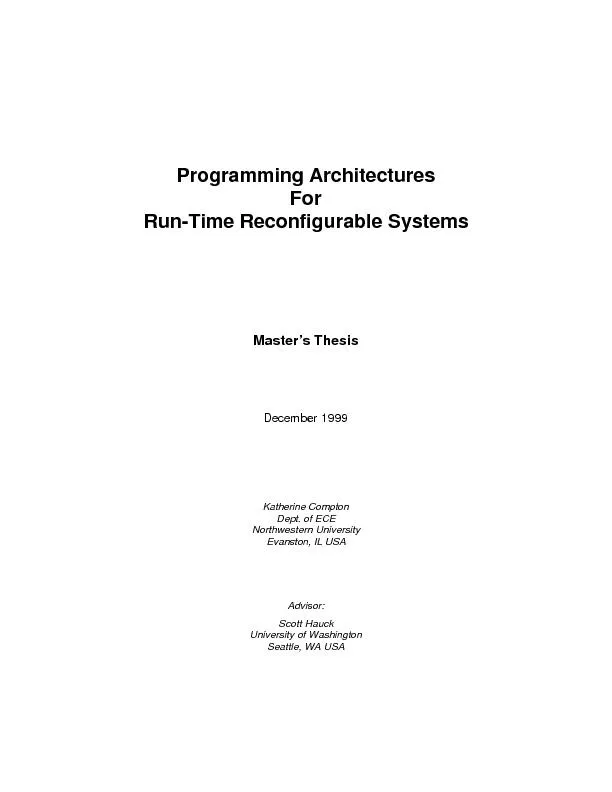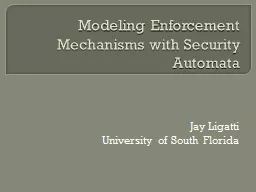PPT-Efficient Runtime Policy Enforcement Using Counterexample-G
Author : alexa-scheidler | Published Date : 2016-05-12
Matt Fredrikson Rich Joiner Somesh Jha Tom Reps Phillip Porras Hassen Saïdi Vinod Yegneswaran 1 Funded by Outline Ensuring safety properties current
Presentation Embed Code
Download Presentation
Download Presentation The PPT/PDF document "Efficient Runtime Policy Enforcement Usi..." is the property of its rightful owner. Permission is granted to download and print the materials on this website for personal, non-commercial use only, and to display it on your personal computer provided you do not modify the materials and that you retain all copyright notices contained in the materials. By downloading content from our website, you accept the terms of this agreement.
Efficient Runtime Policy Enforcement Using Counterexample-G: Transcript
Download Rules Of Document
"Efficient Runtime Policy Enforcement Using Counterexample-G"The content belongs to its owner. You may download and print it for personal use, without modification, and keep all copyright notices. By downloading, you agree to these terms.
Related Documents














